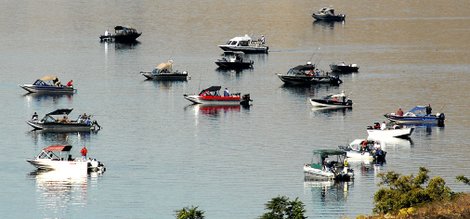forum
library
tutorial
contact

Idaho Seeks
Spring Chinook Angling Change
by Staff
The Columbian, February 6, 2014
|
the film forum library tutorial contact |

|
Idaho Seeks
by Staff
|
 Idaho's fisheries chief made a pitch last week to delay fishing for spring chinook salmon in the lower Columbia River between Interstate 5 and Bonneville Dam until early to mid-May.
Idaho's fisheries chief made a pitch last week to delay fishing for spring chinook salmon in the lower Columbia River between Interstate 5 and Bonneville Dam until early to mid-May.
Washington and Oregon officials listened, but weren't buying.
Spring chinook sport fishing will begin March 1 upstream of Interstate 5. Two days -- March 25 and April 1 -- have been set aside for commercial fishing in the lower Columbia.
Ed Schriever, chief of fisheries for the Idaho Department of Fish and Game, made his request at the Columbia River Compact meeting in Vancouver on Jan. 29.
Fishing seasons in the lower Columbia River in March and April disproportionately harvest the earliest-returning spring chinook, Schriever said.
Idaho's Rapid River-Clearwater stock of spring chinook particularly gets cropped hard in the lower Columbia, he said.
Fifty-five percent of the Rapid River fish that enter the Columbia make it to Lower Granite Dam on the Snake River, Schriever said.
But 85 percent of the spring chinook headed to Sawtooth Hatchery on the upper Salmon River make it to Lower Granite Dam, he said. Sawtooth spring chinook return during the middle of the spring chinook run.
"That's because of its timing -- not being on the front end of the run,'' Schriever said. "Its conversion rate -- all things being equal -- is 30 percent higher than the Rapid River-Clearwater stock.''
Spring chinook fishing is an important activity in Idaho and helps rural economies, he said.
"We like to fish, too,'' said Schriever.
But the lower Columbia's high harvest of Idaho-origin spring chinook delays the start of fisheries and limits catch, he said.
The Clearwater River sport season in 2013 had a quota of just 500 fish.
Spring chinook have to avoid catch by sportsmen and gillnetters in the lower Columbia, treaty Indian nets in the Bonneville, The Dalles and John Day pools, plus make it past eight hydroelectric dams to reach Idaho.
"When you are at the end of the line, you take what's left and you fish on what's available and make sure that you don't cut into the brood stock,'' Schriever said.
"Whatever escapes fisheries in the lower Columbia establishes an available run size objective,'' he said. "We subtract off the individual and aggregate brood stock needs and divide the remainder by two and we share those with the tribes.''
Tony Nigro of the Oregon Department of Fish and Wildlife and Guy Norman of the Washington Department of Fish and Wildlife reminded Schriever that spring chinook are managed with a 30 percent buffer to avoid overharvest in the lower Columbia.
For 2014, that means an upper Columbia-Snake spring chinook run forecast to be 227,000 is being managed as if it will be 158,900.
Norman said the 30 percent buffer does help distribute the lower Columbia catch over a longer time period.
The buffer is not released until the upper Columbia run forecast is updated in early to mid-May.
"I don't want that buffer to be taken for granted,'' Nigro said.
learn more on topics covered in the film
see the video
read the script
learn the songs
discussion forum
